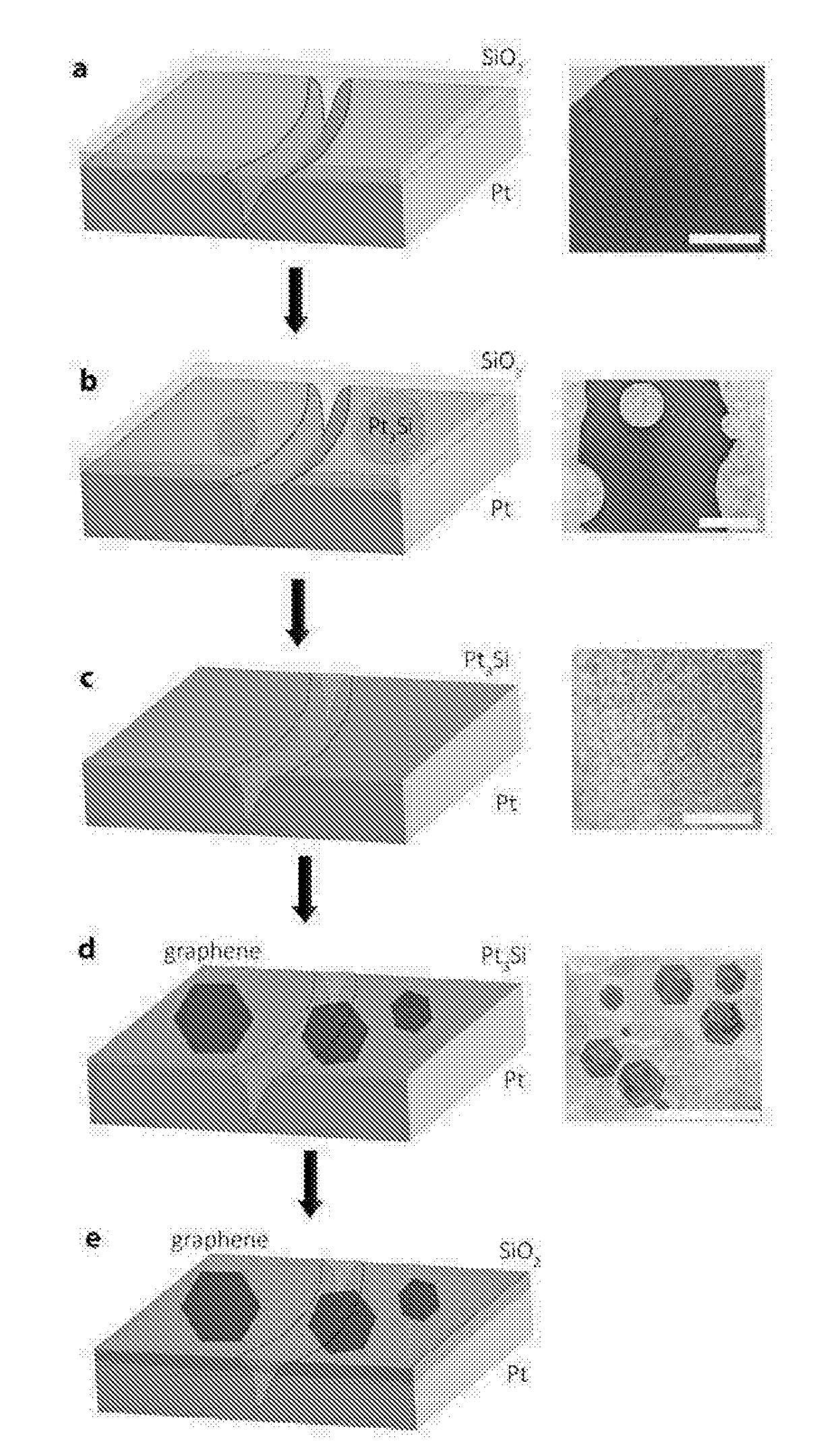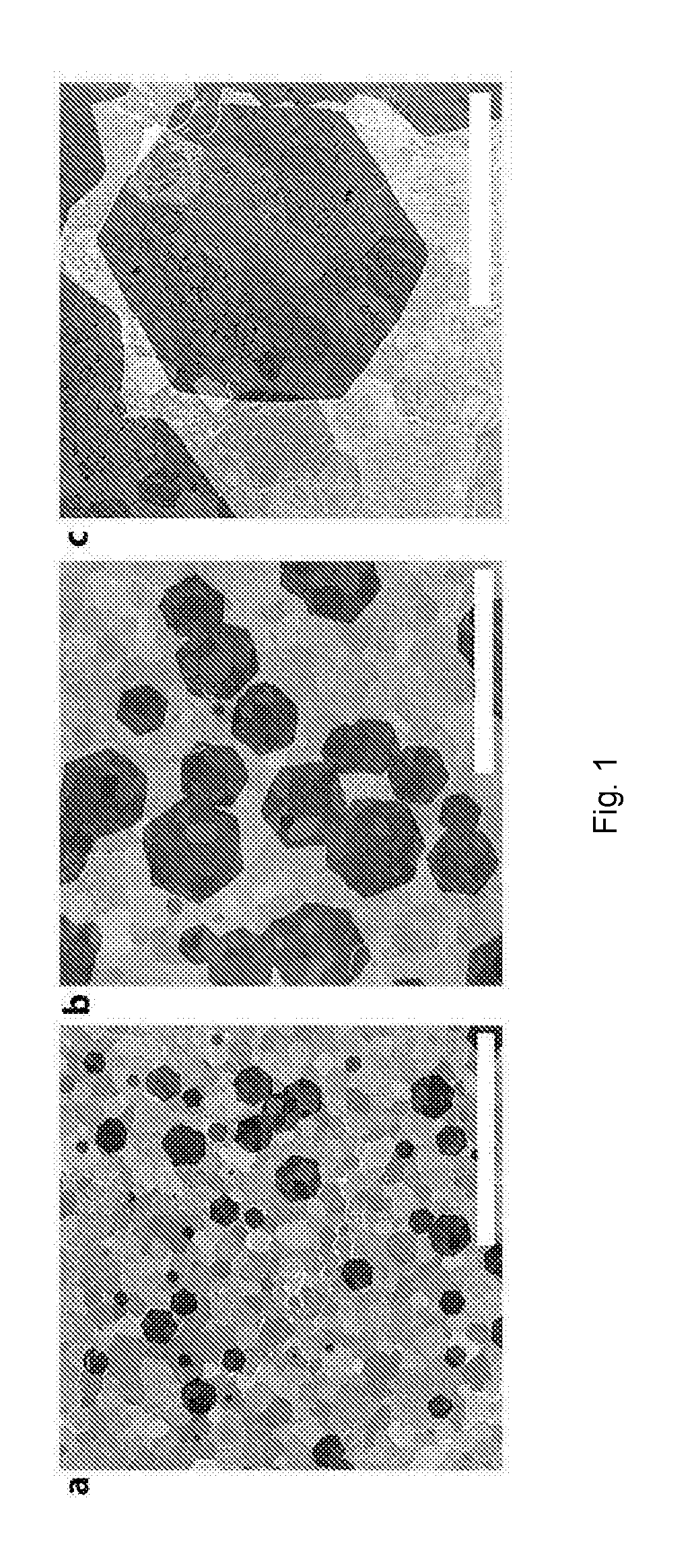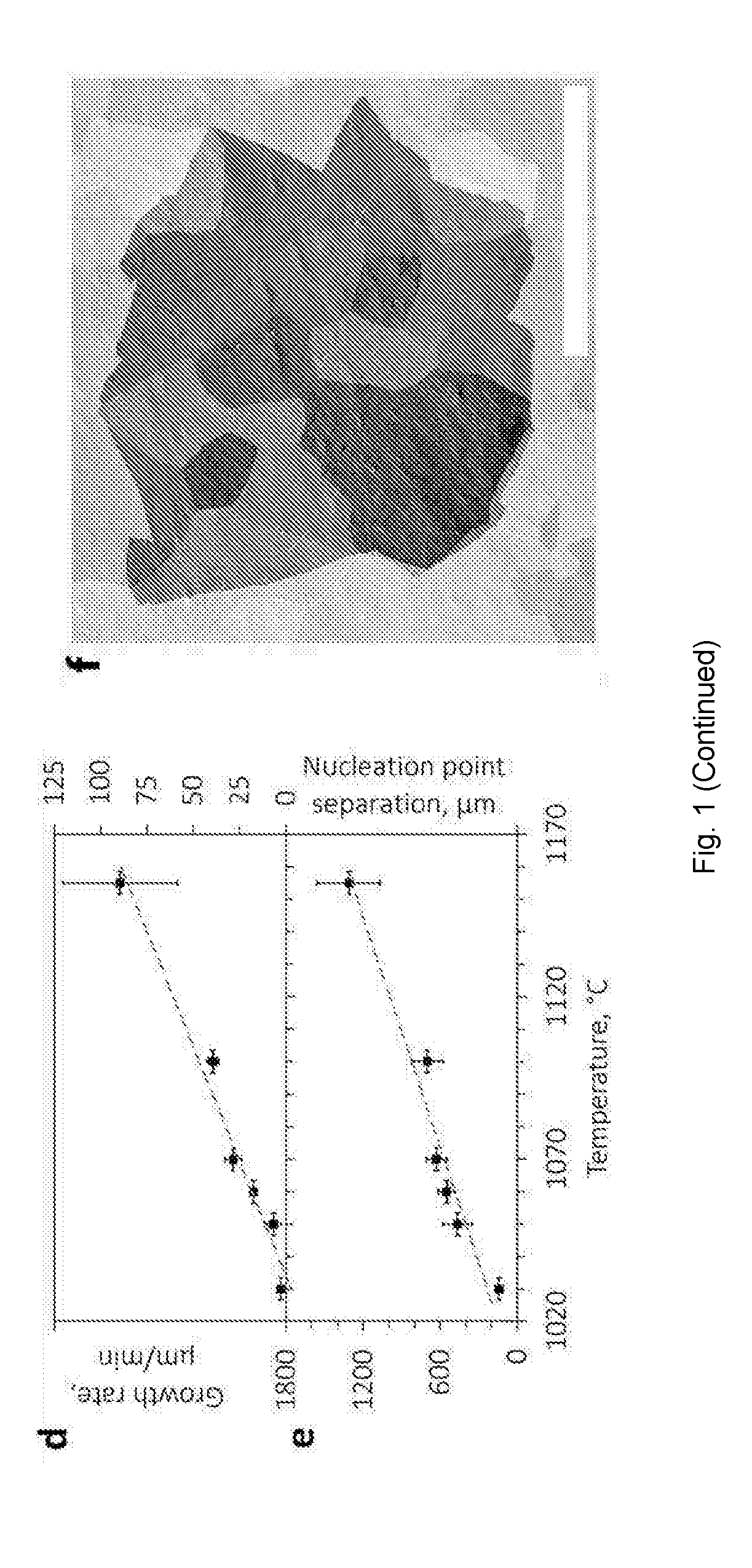Process for the production of two-dimensional nanomaterials
a two-dimensional nanomaterial and nanotechnology, applied in single-layer graphene, boron compounds, coatings, etc., can solve the problems of large area, long synthesis time, and unyielding problem of single crystal graphene with a controlled number of layers, so as to reduce the influence of any topographic defects, reduce the number of layers, and reduce the effect of synthesis kinetics
- Summary
- Abstract
- Description
- Claims
- Application Information
AI Technical Summary
Benefits of technology
Problems solved by technology
Method used
Image
Examples
example 1
[0054]The following Example illustrates a process for the production of graphene using a silicidated platinum substrate.
Materials and Methods
Substrate Preparation
[0055]A film of SiO2 of specified thickness was deposited onto a 25 μm thick Pt foil (Goodfellow, 99.95% purity, washed in acetone and deionized water) via CVD with a tetraethyl orthosilicate (TEOS) precursor. For example, a SiO2 film of about 1 μm thickness can be deposited on clean Pt with CVD by passing Ar gas (350 sccm) through a TEOS precursor at about 700° C. for 30 minutes. Other methods, such as Si, SiO, SiO2 evaporation, sputtering and sol-gel processes can also be used to deposit the film onto the foil.
Graphene Synthesis
[0056]Graphene was synthesised in a standard CVD apparatus at atmospheric pressure with a methane (CH4) and hydrogen (H2) gas mixture. The CVD apparatus consisted of a gas system with three gases: CH4, H2, Ar (99.995% purity), controlled with mass flow controllers. The outlet line with the gas mixt...
example 2
[0070]Following similar procedures, hexagonal flakes of monolayer graphene can be grown on silicidated palladium foils. By way of illustration, hexagonal monolayer graphene flakes of about 300 μm size with about 3 mm nucleation point separation can be achieved by depositing a 50 nm SiO2 layer, followed by annealing at 1150° C. with hydrogen flow of 200 sccm for 30 minutes, followed by a 15 minute synthesis stage with 1.8 sccm methane and 600 sccm hydrogen.
example 3
[0071]Moreover, similar procedures may be used to grow hexagonal boron nitride on silicidated platinum. By way of illustration, a SiO2 film of about 1 μm is deposited on pristine Pt with CVD by passing Ar gas (350 sccm) through a TEOS precursor at about 700° C. The substrate is annealed under 200 sccm hydrogen flow for 30 minutes at 1070° C. to form the silicide. Hexagonal boron nitride is then grown by CVD. The vapour of ammonia borane precursor (100 mg in a quartz container, heated to around 100° C.) is carried by a 10 sccm flow of hydrogen, this flow is then diluted with 200 sccm of hydrogen in a quartz tube. The flow through the quartz tube enters a furnace heated to 1000° C. with the hot silicidated Pt substrate. The synthesis time is 30 minutes, after which the substrate is quenched by moving the furnace away from the substrate.
PUM
| Property | Measurement | Unit |
|---|---|---|
| thickness | aaaaa | aaaaa |
| thickness | aaaaa | aaaaa |
| thickness | aaaaa | aaaaa |
Abstract
Description
Claims
Application Information
 Login to View More
Login to View More - R&D
- Intellectual Property
- Life Sciences
- Materials
- Tech Scout
- Unparalleled Data Quality
- Higher Quality Content
- 60% Fewer Hallucinations
Browse by: Latest US Patents, China's latest patents, Technical Efficacy Thesaurus, Application Domain, Technology Topic, Popular Technical Reports.
© 2025 PatSnap. All rights reserved.Legal|Privacy policy|Modern Slavery Act Transparency Statement|Sitemap|About US| Contact US: help@patsnap.com



